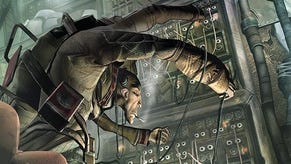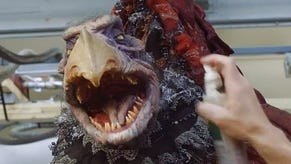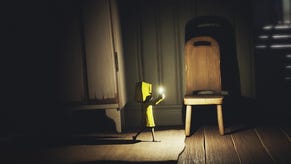Little Nightmares review
Child's play.
Little Nightmares is everything you may have loved about LittleBigPlanet thrown into a sausage grinder with everything you may have dreaded in Silent Hill. A side-scrolling 3D platformer that conjures up a wealth of grisly implications within a brisk five-hour runtime, it reapplies Media Molecule's conceit of playing a nimble tot among gargantuan domestic objects to a fetid, ocean-going warren of beaten metal and oozing flesh, touched a little questionably by imagery derived from real-life atrocity.
Like LittleBigPlanet (and last year's overly saccharine Unravel), the game is a testament to the power of childish make-believe. But where LittleBigPlanet's boulder-sized yarnballs and undulating felt backdrops are paeans to infant daydreams, Tarsier's latest offering channels the fear of a toddler navigating a world it doesn't yet fit: that period in life when the edge of a dining table is an impassable horizon, stairs are climbed one at a time, and turning a door handle requires the full weight of your body.
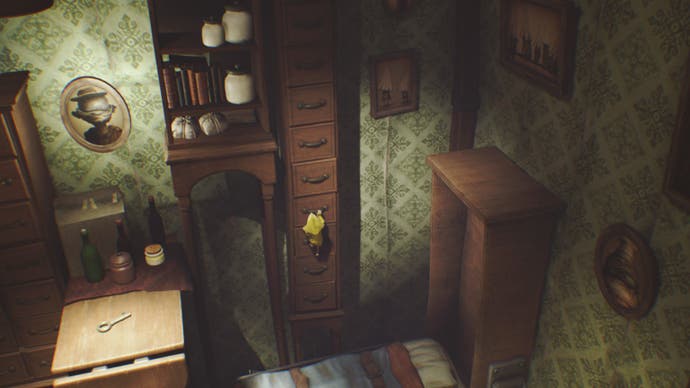
Little Nightmares casts you as Six, a diminutive stowaway in a luminous yellow mac, armed with a flip-top lighter that is used to kindle lamps which serve as checkpoints. Your goal, having popped out of an abandoned suitcase at the outset, is simply to get through the game's swaying labyrinth intact - yanking on switches and dragging objects around in order to activate mechanisms or open doors many, many times your height. Six is a delicately wrought little personality, her eyes darting to puzzle props as she cups the lighter's flame, and there's a mild absurdity to the sight of her lobbing enormous tubes of toilet roll at breakable surfaces, or tugging a giant key from a peg by swinging back and forth. That sense of absurdity fades swiftly, however, when you encounter the creatures these objects belong to.
I wouldn't call them "monsters", exactly, though they're certainly monstrous - chuckling, creaking hummocks of flab and soiled cloth, with horribly deformed limbs, whistling breath and awful, clutching fingers. Rather, they feel like attempts to recreate how overbearing and unnervingly alien adults may appear through the eyes of a child - coarse, blotchy tyrants who can't be reasoned with and whose intentions you only dimly understand.
Avoiding their attention while completing each area's puzzles gives rise to a more complex kind of fear than we're used to in horror games. It's not a question of shocks or grotesqueness, though you can expect plenty of both, but something like the troubled thrill of sneaking downstairs late at night to make off with the cookie jar. Tarsier has described Little Nightmares as a "hide and seek" game rather than a "stealth" game, and while this may sound like developer doublespeak, it supports the idea that you are neither an infiltrator nor a fugitive but simply a disobedient brat. It's notable, on this count, that many of your adversaries seem more interested in catching you than killing you - gazing upon your struggling body with what could almost be tenderness as the screen fades to black.
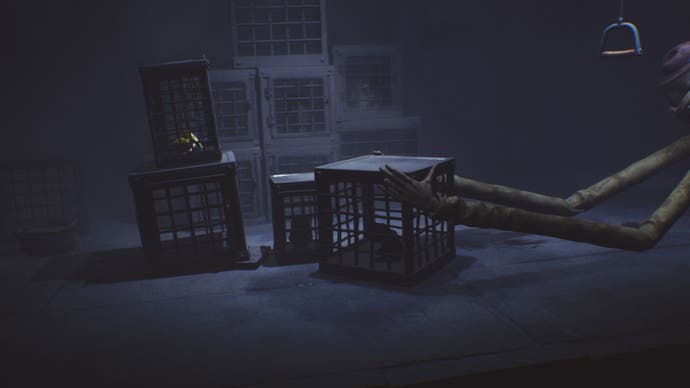
Also integral to the game's suspense is the fact that while the labyrinth takes many shapes - a sinister dormitory, a ghastly kitchen, a raucous feasting table and a hushed apartment - it is always to some degree a home and a workspace. Your ogreish adversaries aren't static threats - you'll find them engaged in various domestic routines, mashing slabs of unidentifiable meat with pudgy fists as you cower beneath a kitchen table, or trundling between bookcases on shrunken legs as you peek over a shelf, waiting for an opportunity to slip past.
In theory this breaks a cardinal rule of horror storytelling - never show people what they're scared of, at least till the finish - but having to watch these entities go about their chores, working out what exactly they're doing and how this fits into a wider framework, only adds to the game's repugnance. There's also something about the sheer mundanity of it all, the feeling that you're eavesdropping upon what is basically just another day at the office, that is more unsettling than any spectacle of violence could ever be. In any case, you'll often have to make your move when a creature isn't quite in view - scurrying to a switch or handhold while listening out for a hoarse in-take of breath, an outraged squeal and the thunder of approaching feet. Each foe obliges a slightly different approach to evasion - some have a longer reach, others are more perceptive - but all of them will outrun you if you stray onto open ground.
The game's challenges don't change much in the course of the story - there are no new abilities to acquire, save for a single bespoke mechanic during the finale - but the mood evolves in marvelous style as you piece together the labyrinth's secrets. The fourth chapter, in particular, delivers magnificently on the revolting implications of the previous areas. The game also ramps up the stakes steadily as you acclimatise to its logic: you'll gravitate from throwing objects at elevator buttons to retrieving a key from a mantelpiece while something vast and unspeakable wheezes on a bed nearby.
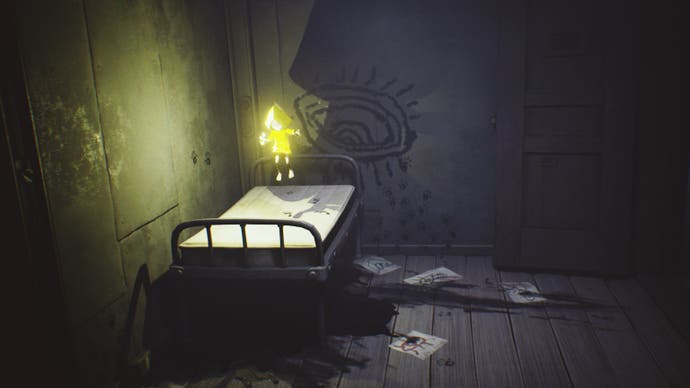
As with Playdead's LIMBO and Inside, Little Nightmares is at root a complex social critique - poised queasily between a literal examination of the foulness of human appetites and an allegory for capitalist exploitation. In the process of weaving its tapestry, it also draws upon motifs that are strongly associated with the Holocaust, most obviously in the shape of shoes hurled down a waste disposal chute, recalling the heaps of belongings discovered by Allied soldiers at Nazi extermination camps in West Germany.
To play upon such a history in the context of a fantasy - indeed, to ask you to wade through piles of discarded shoes, pursued by a burrowing menace representative of the suffering these objects at once reveal and disguise - borders on the cheap and tawdry, and I'm still not sure whether these scenes can be defended. But the imagery hardly feels out of place in the game's tale, and Tarsier's avoidance of dialogue and exposition leaves the relevance of these sequences open to inquiry - a gentle encouragement to investigate events that risk being reduced, here, to a trope.
Little Nightmares has a few more prosaic issues. The choice of perspective occasionally makes distinguishing between fore and background a struggle, cue the odd accidental fall, and the game crashed a couple of times from the pause menu when my computer went to sleep. Such blemishes aside, this is a potent contribution to the thriving genre of philosophical platformers, a startlingly odious horror game, and an almost mocking subversion of Tarsier's work for Media Molecule, creator of LittleBigPlanet. It's a rebuke to the sentimentality with which childhood is regarded in many other games, though you could argue that it veers too far the other way, into ghoulish voyeurism - a reminder that if to be young is to have the world at your feet, it's also to inhabit a realm of giants.



